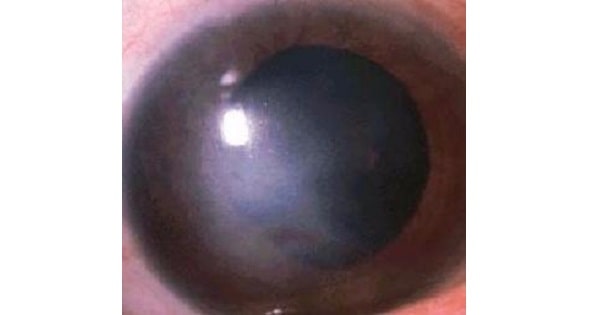INTERSTITIAL KERATITIS
Interstitial keratitis is seen in all except:
| A |
Syphilis |
|
| B |
Acanthamoeba |
|
| C |
HSV ChlamydiaTrachomatis |
|
| D |
HZV |
Interstitial keratitis is seen in all except:
| A |
Syphilis |
|
| B |
Acanthamoeba |
|
| C |
HSV ChlamydiaTrachomatis |
|
| D |
HZV |
B i.e. Achanthamoeba
> acquired syphilis)Q – Herpetic keratitis (including chicken pox; HSV is now the most common cause) Other viral infections (HSV, Herpes zoster, Epstein Barr, mumps, measels etc) – Tuberculosis, leprosy – Sarcoidosis – Trypanosomiasis, – Malaria – Cogan’s syndrome (d/t chlamydinQ etc) ” v:shapes=”_x0000_s1027″>Interstitial keratitis (IK)
Interstitial keratitis (IK) is nonsuppurative inflammation of corneal stroma without primary involvement of epithelium or endothelium. In most cases the inflammation is an immune mediated process triggered by an appropriate antigen. Immune stromal keratitis manifests as focal, multifocal or diffuse stromal opacities or an immune ring. It is often accompanied by stromal edema and mild anterior chamber reaction, while sparing epithelium and endothelium. It is called IK if accompanied by vascularization. HSVQ is now the most common cause of IK (esp.unilateral). Unlike syphilitic (luetic) IK, HSV neovascularization is usually sectoral & leads upto stromal scar.
– Syphilis related (congenital >> acquired) IK is usually bilateral, although usually not simultaneous. It presents with characteristic salmon patch appearance, granulomatnus anterior ureitis, and ghost vessels and feathery deep stromal scarring in healed stage.
– Cogan’s syndrome is chronic bilateral deep nonsyphilitic IK with vestibuloauditory chysfunction (i.e. neuro sensory deafness, vertigo & tinnitus) because of systemic autoimmune vasculitis (life thereatening in 10%). Serum antibodies to various • infectious agents (Lyme disease, Chalamydia, type 1 poliovirus) have been associated with Cogan’s syndrome.
Interstitial keratitis may be associated with:
| A |
Congenital syphilis |
|
| B |
Malaria |
|
| C |
Sarcoidosis |
|
| D |
All of the above |
Interstitial keratitis may be associated with:
| A |
Congenital syphilis |
|
| B |
Malaria |
|
| C |
Sarcoidosis |
|
| D |
All of the above |
Ans. All of the above
Interstitial keratitis is commonly seen in:
March 2005
| A |
Fungal keratitis |
|
| B |
Congenital syphilis |
|
| C |
Phlyctenular keratitis |
|
| D |
Trachoma |
Interstitial keratitis is commonly seen in:
March 2005
| A |
Fungal keratitis |
|
| B |
Congenital syphilis |
|
| C |
Phlyctenular keratitis |
|
| D |
Trachoma |
Ans. B: Congenital syphilis
It develop from host immune mechanisms to active infections or antigens within the stromal keratocytes. Diseases known to cause interstitial keratitis include: congenital syphilis, herpes simplex, herpes zoster, Epstein-Barr, tuberculosis and leprosy.
Clinical manifestations: superficial stromal scarring, necrotizing stromal keratitis and disciform keratitis.
As the inflammation subsides, intracorneal blood vessels will regress and become nonperfused vascular channels, which are known as “ghost” vessels. These vessels can be readily visualized using slit lamp biomicroscopy and can become active if inflammation recurs.


